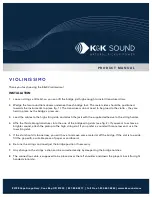
Concepts and Features
R&S
®
ZNC
41
User Manual 1173.9557.02 ─ 13
A comparison of the inverted Smith chart with the Smith chart and the polar diagram
reveals many similarities between the different representations. In fact the shape of a
trace does not change at all if the display format is switched from "Polar" to "Inverted
Smith" or "Smith" – the analyzer simply replaces the underlying grid and the default
marker format.
Inverted Smith chart construction
The inverted Smith chart is point-symmetric to the Smith chart:
The basic properties of the inverted Smith chart follow from this construction:
●
The central horizontal axis corresponds to zero susceptance (real admittance). The
center of the diagram represents Y/Y
0
= 1, where Y
0
is the reference admittance of
the system (zero reflection). At the left and right intersection points between the hor-
izontal axis and the outer circle, the admittance is infinity (short) and zero (open).
●
The outer circle corresponds to zero conductance (purely imaginary admittance).
Points outside the outer circle indicate an active component.
●
The upper and lower half of the diagram correspond to negative (inductive) and pos-
itive (capacitive) susceptive components of the admittance, respectively.
Example: Reflection coefficients in the inverted Smith chart
If the measured quantity is a complex reflection coefficient G (e.g. S
11
, S
22
), then the unit
inverted Smith chart can be used to read the normalized admittance of the DUT. The
coordinates in the normalized admittance plane and in the reflection coefficient plane are
related as follows (see also: definition of matched-circuit (converted) admittances):
Y / Y
0
= (1 -
Γ
) / (1 +
Γ
)
From this equation it is easy to relate the real and imaginary components of the complex
admittance to the real and imaginary parts of
Γ
:
2
2
2
2
0
)
Im(
)
Re(
1
)
Im(
)
Re(
1
)
/
Re(
Y
Y
G
Screen Elements
















































